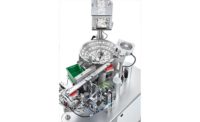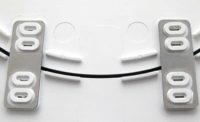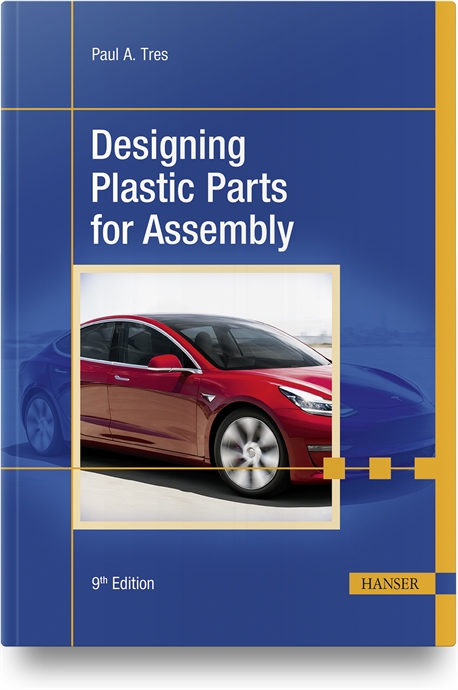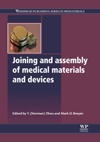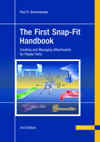Medical Device Assembly: Laser Welds Plastic Parts for Infusion Pump

A European medical device manufacturer uses a laser welding system from Leister Process Technologies to assemble a new infusion pump.

The RowePump is a self-powered, pocket-sized infusion pump manufactured by RoweMed in Parchim, Germany. Made from a lightweight polycarbonate specifically formulated for medical devices, the pump is used to administer medications, such as pain treatments and antibiotics. It can be adjusted to deliver a flow rate ranging from 0.5 to 25 milliliters per hour. The flow rate will not vary by more than ±5 percent during operation.
The design called for a transparent lid to be welded onto each side of the pump’s midsection, which is dyed blue.
The requirements for the weld seams are high. The assembly must withstand an internal pressure of 4 bar. The midsection contains micro-channels approximately 10 microns in diameter. These channels are located close to the weld seam, so energy input must be precise. Because the pump is used in direct contact with the patient, the welding environment must be free of dust and contamination, and the weld process cannot generate particulates. Finally, cycle time must be as short as possible.
The Novolas laser transmission welding system from Leister Process Technologies met these requirements. Initially, however, the process needed some fine-tuning. Preliminary tests found that the penetration of the laser into the blue-dyed material was too deep, and the system was not meeting requirements for dimensional accuracy or joint strength.
Finding a solution to the problem required a team effort between engineers from RoweMed, Leister, Bayer Material Science, which supplied the plastic, and Treffert Polymer Technology, which supplied the dye. Their task was to develop a new dye color that met RoweMed’s requirements for safety and aesthetics, while optimizing absorption of the laser’s energy and maintaining the mechanical properties of the plastic.
Depending on the polymer, plastics are usually 95 percent transparent to light in the near-infrared spectrum. It is only with the inclusion of various additives and dyes that the plastic can absorb enough laser energy to melt.
To determine the optimal formulation, engineers tested a number of recipes. First up was a plastic developed to absorb laser light at a wavelength of 950 nanometers. That material did not absorb enough energy, so engineers tried a plastic that absorbed light at a wavelength of 1,064 nanometers. Although that material worked well, the color did not quite match RoweMed’s aesthetic requirements. Ultimately, the optimal color shade was achieved at lower wavelength.
The next step was to avoid occurrence of a weld bead between the parts, since this would adversely affect the performance of the device. After optimizing the dies and molding process, sink marks which were causing disruptions larger than 0.1 millimeter were eliminated.
The Novolas system itself is equipped with a 50-watt diode laser that produces a wavelength to match the absorbent dye. The system’s two linear axes have a traverse path of 250 millimeters each.
Because the pump will be assembled in lots of 200,000 to 400,000 per year, a manually loaded, semiautomatic system was suitable for the task. A rotating fixture accommodates two assemblies simultaneously. At each cycle, a transparent lid is welded onto one side of the workpiece. The second lid is then welded onto the opposite side. This allows for a finished assembly to be discharged with every cycle.
The fixtures are equipped with sensors to detect the presence and positioning of the parts, and the welding area is safeguarded by a light curtain. This enables the system to recognize when the parts have been inserted by the operator. The welding process then begins automatically; no additional manual start signal is necessary.
The system is so efficient that it is only 50 percent busy assembling the pumps. RoweMed plans to use the spare capacity to expand production or to weld other workpieces.

The RowePump is a self-powered, pocket-sized infusion pump manufactured by RoweMed in Parchim, Germany. Made from a lightweight polycarbonate specifically formulated for medical devices, the pump is used to administer medications, such as pain treatments and antibiotics. It can be adjusted to deliver a flow rate ranging from 0.5 to 25 milliliters per hour. The flow rate will not vary by more than ±5 percent during operation.
The design called for a transparent lid to be welded onto each side of the pump’s midsection, which is dyed blue.
The requirements for the weld seams are high. The assembly must withstand an internal pressure of 4 bar. The midsection contains micro-channels approximately 10 microns in diameter. These channels are located close to the weld seam, so energy input must be precise. Because the pump is used in direct contact with the patient, the welding environment must be free of dust and contamination, and the weld process cannot generate particulates. Finally, cycle time must be as short as possible.
The Novolas laser transmission welding system from Leister Process Technologies met these requirements. Initially, however, the process needed some fine-tuning. Preliminary tests found that the penetration of the laser into the blue-dyed material was too deep, and the system was not meeting requirements for dimensional accuracy or joint strength.
Finding a solution to the problem required a team effort between engineers from RoweMed, Leister, Bayer Material Science, which supplied the plastic, and Treffert Polymer Technology, which supplied the dye. Their task was to develop a new dye color that met RoweMed’s requirements for safety and aesthetics, while optimizing absorption of the laser’s energy and maintaining the mechanical properties of the plastic.
Depending on the polymer, plastics are usually 95 percent transparent to light in the near-infrared spectrum. It is only with the inclusion of various additives and dyes that the plastic can absorb enough laser energy to melt.
To determine the optimal formulation, engineers tested a number of recipes. First up was a plastic developed to absorb laser light at a wavelength of 950 nanometers. That material did not absorb enough energy, so engineers tried a plastic that absorbed light at a wavelength of 1,064 nanometers. Although that material worked well, the color did not quite match RoweMed’s aesthetic requirements. Ultimately, the optimal color shade was achieved at lower wavelength.
The next step was to avoid occurrence of a weld bead between the parts, since this would adversely affect the performance of the device. After optimizing the dies and molding process, sink marks which were causing disruptions larger than 0.1 millimeter were eliminated.
The Novolas system itself is equipped with a 50-watt diode laser that produces a wavelength to match the absorbent dye. The system’s two linear axes have a traverse path of 250 millimeters each.
Because the pump will be assembled in lots of 200,000 to 400,000 per year, a manually loaded, semiautomatic system was suitable for the task. A rotating fixture accommodates two assemblies simultaneously. At each cycle, a transparent lid is welded onto one side of the workpiece. The second lid is then welded onto the opposite side. This allows for a finished assembly to be discharged with every cycle.
The fixtures are equipped with sensors to detect the presence and positioning of the parts, and the welding area is safeguarded by a light curtain. This enables the system to recognize when the parts have been inserted by the operator. The welding process then begins automatically; no additional manual start signal is necessary.
The system is so efficient that it is only 50 percent busy assembling the pumps. RoweMed plans to use the spare capacity to expand production or to weld other workpieces.
Looking for a reprint of this article?
From high-res PDFs to custom plaques, order your copy today!





